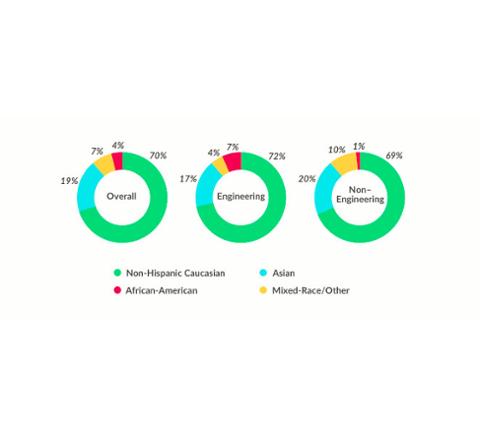Intel, Slack Claim Diversity Gains
Over the past year, tech companies large and small have pledged to boost the diversity of their respective employee ranks, adding more women and underrepresented minorities. But how are those efforts actually working out? Two prominent tech firms—one small, with a lot of buzz, and one giant—have just revealed their latest statistics. A few months after its last diversity report, Stack is back with updated numbers. Why so soon? The firm’s headcount has expanded rapidly since mid-2015, potentially rendering the old percentages outdated. And despite that growth, Slack remains relatively small (right now it has 370 employees), meaning that only a few hirings or departures can drastically change its diversity data. Some 43 percent of Slack’s employees identify as women, up from 39 percent in September. The company remains overwhelmingly Caucasian, at 66.6 percent; another 20 percent is Asian, 4.1 percent is Hispanic, and 3.4 percent is Black. “We recognize that we still have a long way to go,” added the corporate blog post accompanying the data. “For example, while there are women leaders in our engineering and technical organizations, there are still no leadership positions in engineering, product or design held by URMs.” Slack isn’t the only company reporting its diversity numbers. Intel recently published its own percentages for U.S. employees, some 53.3 percent of whom are white. Another 32.8 percent of the chipmaker’s employees are Asian, 8.4 percent are Hispanic, and 3.5 percent are African-American. Roughly 75.2 percent of the company is male. Intel had an upbeat take on its data. “We exceeded our 2015 annual hiring goal, achieving 43.1% diverse hiring against a goal of 40%—up 1.8x hires over 2014,” read the company’s summary. “Our 2016 goal is to achieve 45% diverse hiring in the U.S. with a new sub-goal of 14% hiring of underrepresented minorities.” Intel also claims that it increased its hiring of women by 43 percent, to a total of 35 percent of hires in 2015. Intel and Slack, of course, are just two of many tech companies. As more of those firms publish diversity reports over the next several months, we’ll have an opportunity to see whether the current slate of diversity initiatives are actually affecting employee makeup.



